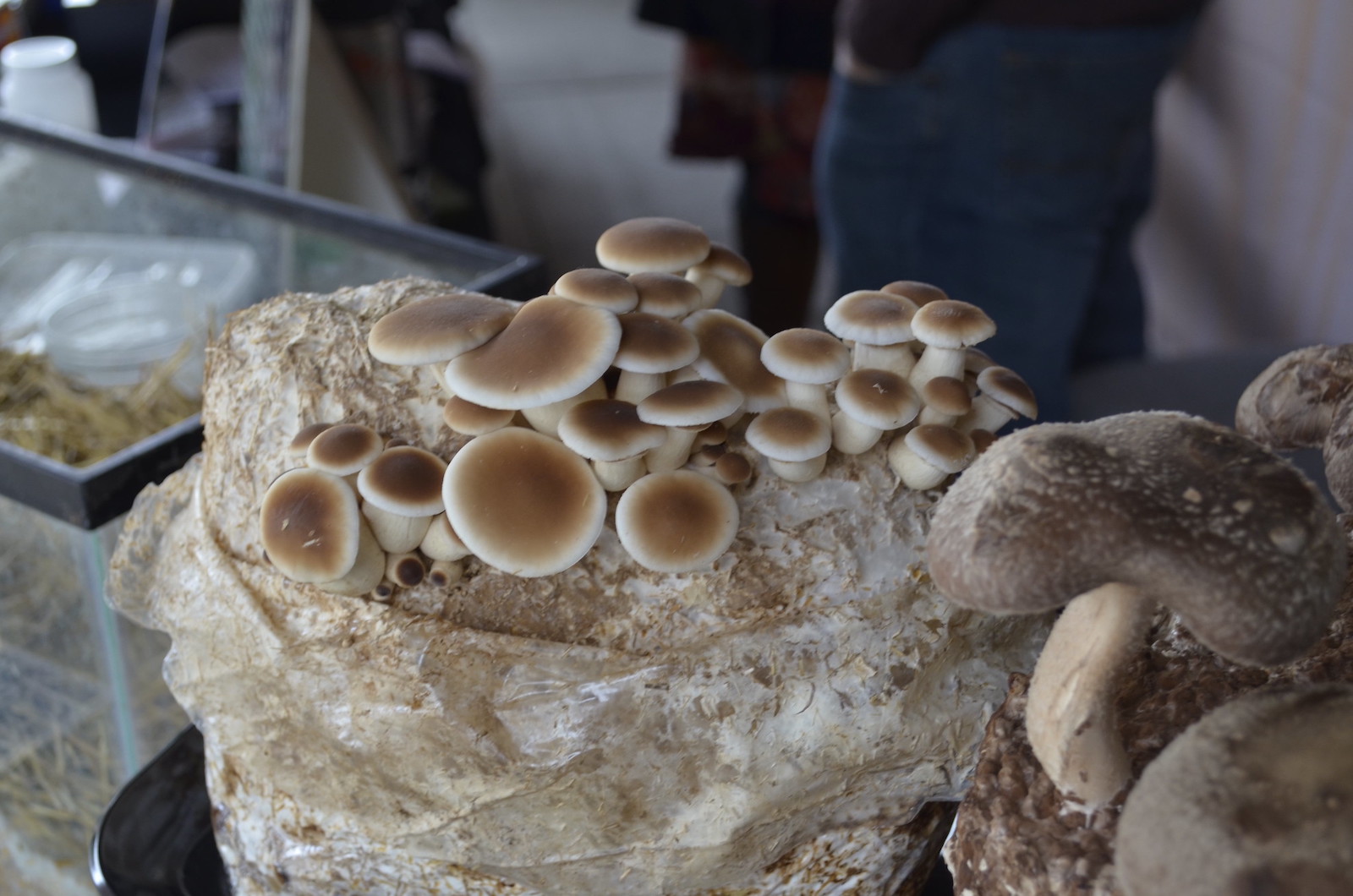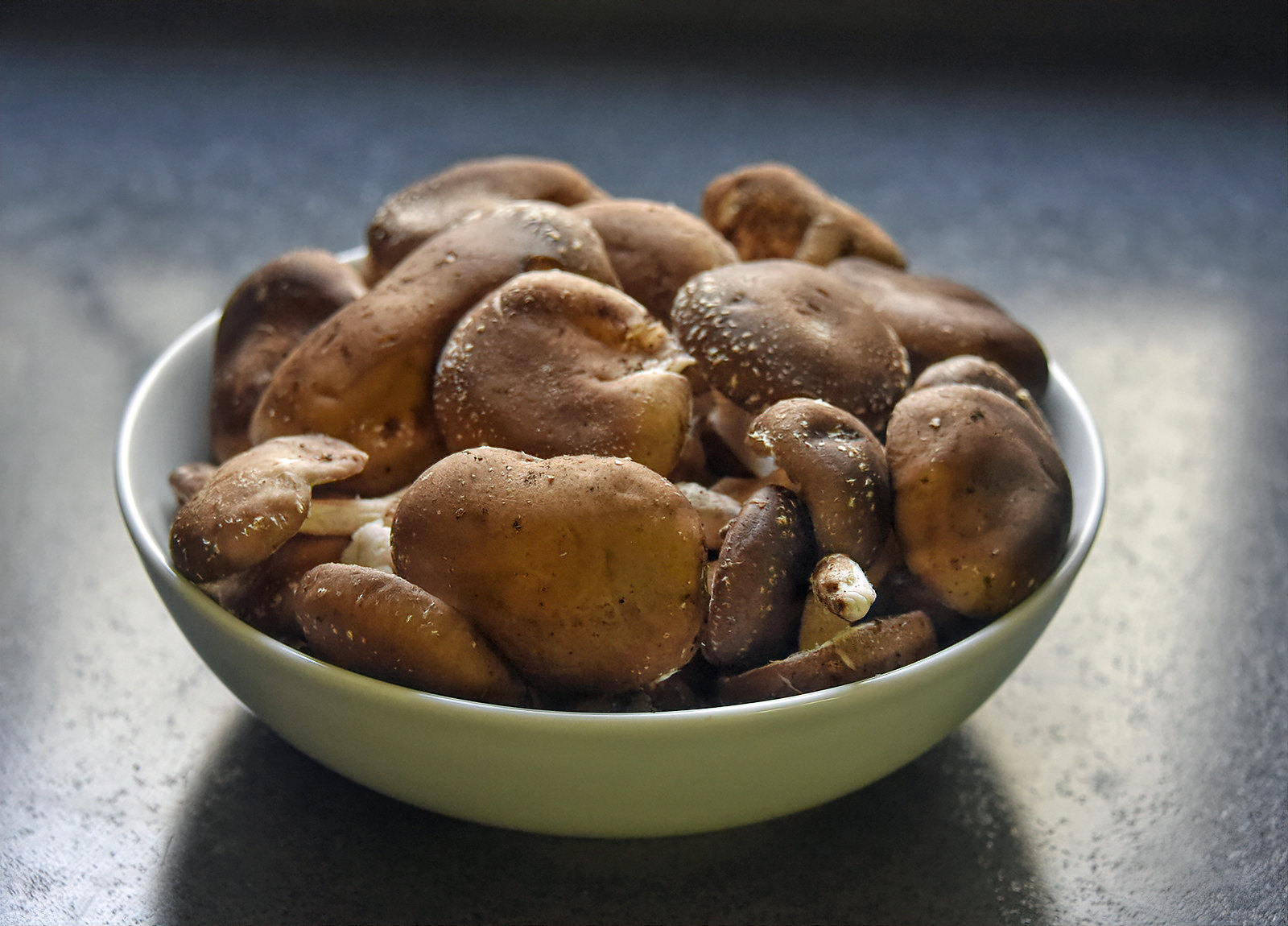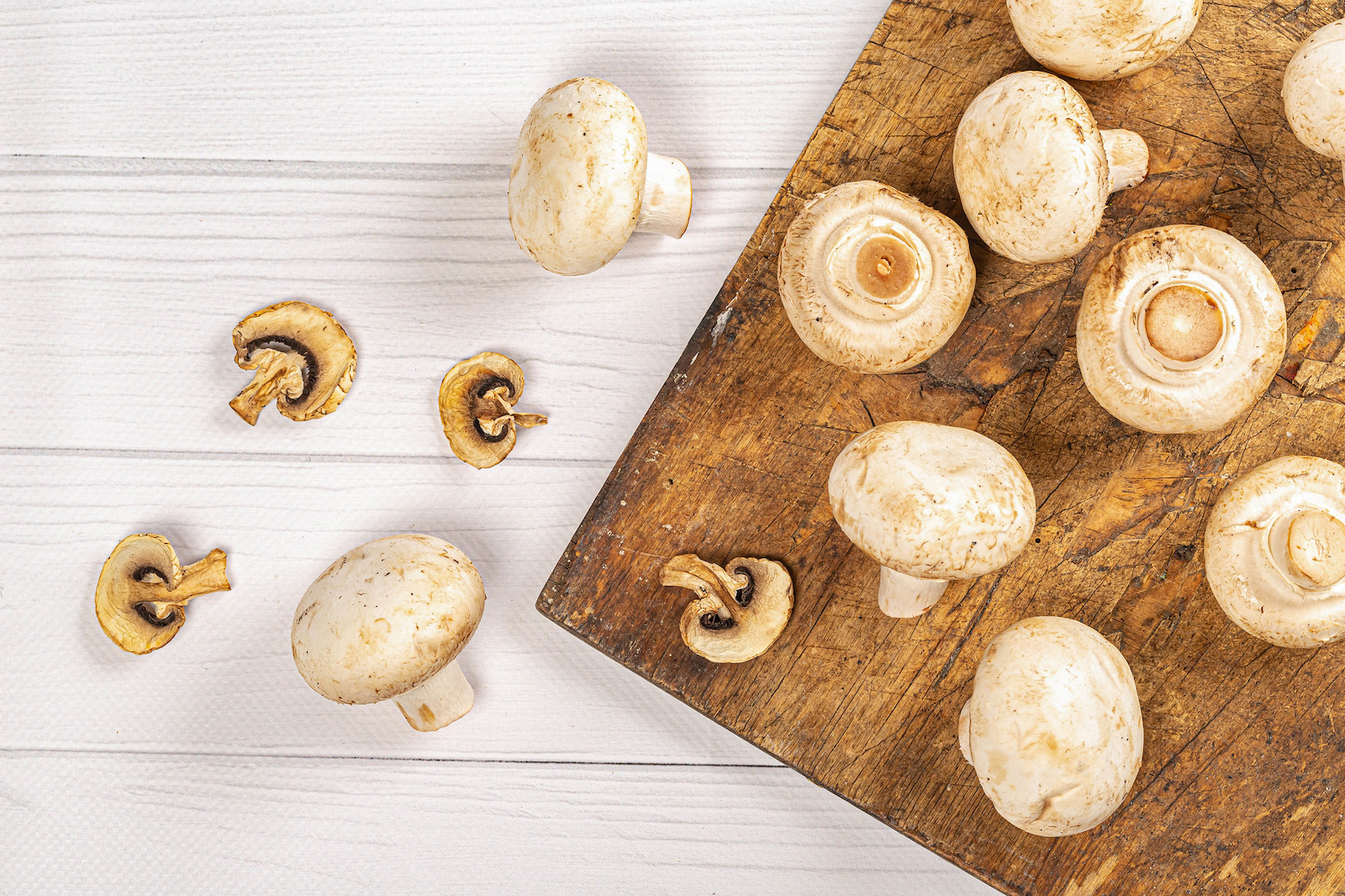Shiitake mushrooms grown on a log - Jo Zimny under CC BY-NC-ND 2.0
A crash course on fungi
Though you’ll find them near the green beans at your local supermarket, mushrooms are not actually vegetables, but fungi. Unlike vegetables, mushrooms don’t have seeds or leaves, and they don’t need light to grow.
Mushrooms grow from spores, which in turn form mycelium: a network of fine white root-like threads. The edible mushroom is the fruiting body of the mycelium. In the forest, the underground mycelium network aids in decomposition and supports the growth of new plants. There are even some claims that trees communicate through the mycelium network!
Those well versed in growing vegetables will find that while their backyard gardening skill set is still useful, fungi are quite different. The good news is that mushrooms are a great food to grow if you don’t have a lot of sunny space. Mushrooms need just the opposite: cool, damp, and dark - or at least shady.

Mushroom growing kit
- Seattle.roamer under CC BY-NC-ND 2.0
Growing mushrooms indoors
While some mushrooms, like morels and truffles, are best off foraged, many mushrooms can be grown indoors, including cremini, maitake, portobello, oyster, and white button. A basement in the wintertime is perfect, but if you don’t have a basement space, you can get creative. Even the cabinet under your kitchen sink could do - just make sure you keep the mushrooms away from any toxic cleaning chemicals.
Every mushroom requires different temperatures and grows on different substrates, like compost, manure, or logs. Button mushrooms are generally considered one of the easiest and can be a good place to start.
While you can gather the materials yourself, purchasing spores or mycelium, substrate, and a place to keep them, kits are the easiest way to get started. Back to the Roots, Mushroom Adventures, and North Spore make a variety of mushroom kits that contain everything you need. Depending on the type of mushroom, and the kit, you can grow mushrooms directly in a box, on a tray filled with substrate, or on a log. The mushrooms will need to be kept nice and damp. Avoid using water with chlorine in it, like most municipal tap water, as it can kill the mushroom spores. Instead, try purchasing spring water.

Homegrown shiitake mushrooms in a bowl
- Jo Zimny under CC BY-NC-ND 2.0
Outdoor mushrooms
If you’d prefer to grow mushrooms outside, shiitake, oyster, and wine caps are all good options. Wine cap mushrooms can be grown in a mushroom bed, and even amongst your other plants in a shady part of your yard. Simply spread their spawn evenly across a layer of wood chips. They will take 2 to 11 months to mature, but can continue producing for years to come. Shiitake and oyster mushrooms can be grown on logs left in a shady part of your lawn. You can create your shiitake or oyster log using a drill and plug spawn, or purchase one pre-made.

Dried and fresh champignon mushrooms
- Marco Verch under CC BY 2.0
What to do with all these mushrooms
Storing mushrooms properly is key - preferably in a paper bag in your refrigerator. If you have more mushrooms than you can possibly use in a week or so, mushrooms can also be dried. If you have a dehydrator, great, otherwise, you can easily dry them in the oven. Dried mushrooms can be used for just about any recipe - but they will need to be soaked before cooking so that they can rehydrate.
In Italy, dried mushrooms are a key ingredient to Pasta coi Funghi. There’s no cream needed in this recipe, just white wine for cooking, some good olive oil, and some nice fresh pasta. A quiche is always a great place to toss in some mushrooms, and maybe some gruyere cheese. Mushroom stroganoff is a vegetarian take on the meaty classic. No matter how you cook them, your mushrooms will be all the more tasty for being home grown.
